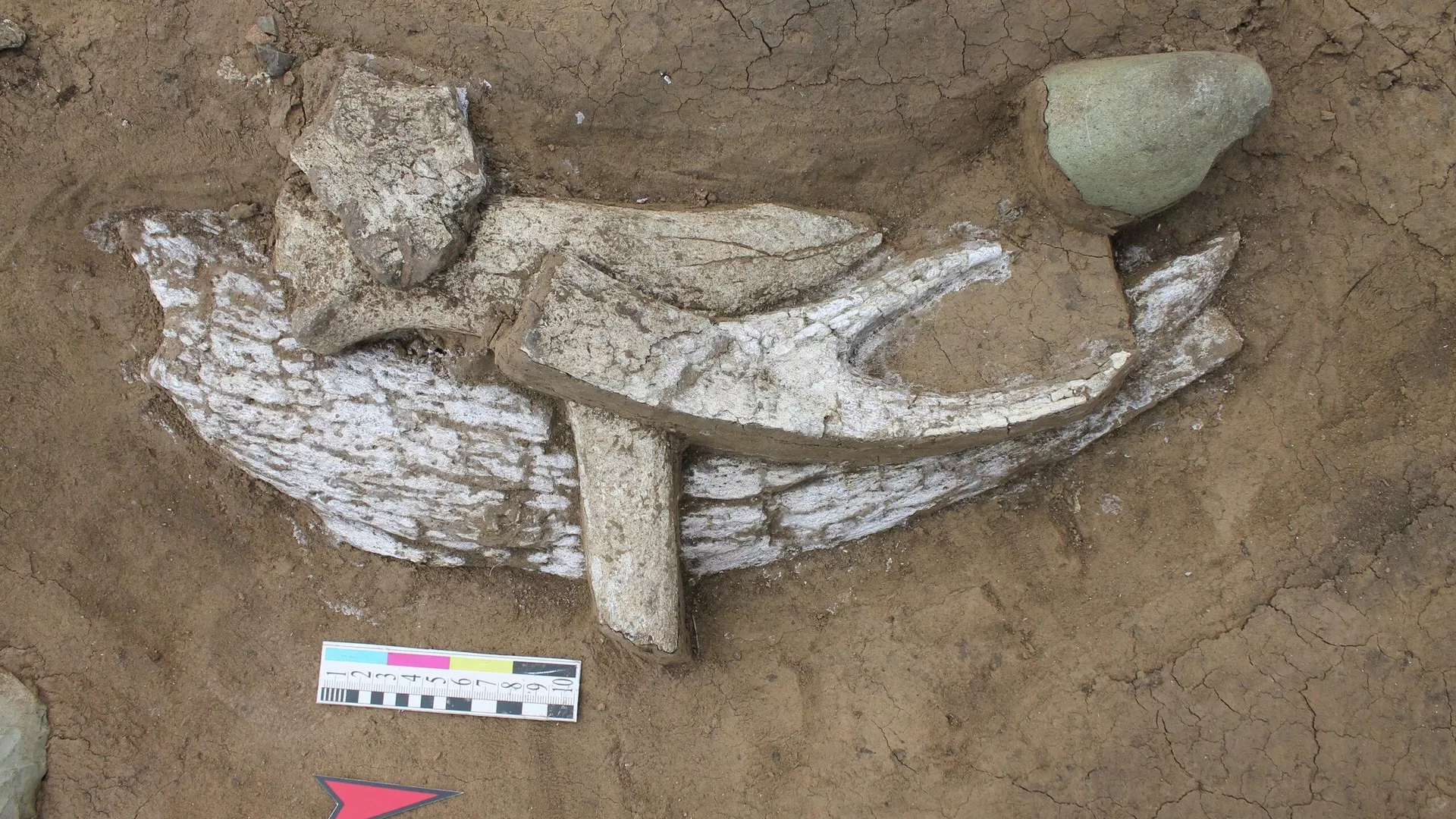

A site of ancient people known as `Solnechny` in the Krasnoyarsk Krai, discovered by chance during construction, has been found to be nearly 10,000 years older than initially thought. This was determined by a research team including scientists from Novosibirsk State University (NSU). Unlike most similar sites, this one is located far from rivers. The findings have been published in the journal `Stratum plus. Archaeology and Cultural Anthropology`.
Dmitry Gurulev, a senior researcher at `Archaeological Research of Siberia`, explained that traces of Upper Paleolithic human activity (12–50 thousand years ago) in the Siberian region are typically found near water bodies.
The `Solnechny` archaeological site was unexpectedly discovered in 2017 during a survey of land prior to highway construction. It is located more than 7 kilometers away from the Yenisei River, within the northern outskirts of the city of Krasnoyarsk.
Excavations covering about 3,000 square meters of the site revealed no remnants of structures indicating long-term human habitation. Experts believe that ancient Paleolithic hunters visited the site primarily for processing hunting spoils. This is supported by the discovery of over 1,700 stone artifacts and nearly 1,000 animal bone fragments, predominantly from reindeer, which were a primary target for hunting.
Bone remains of herbivorous animals found at the `Solnechny` site, which had been disturbed by modern construction and plowing, enabled scientists from Novosibirsk State University (NSU) to determine the age of the earliest settlements there. The archaeological site was found to belong to the early stages of the Afontova culture (19–21 thousand years ago), traces of which are typically found along the banks of the Yenisei River.
Alexey Petrozhytsky, an engineer at the Shared Use Center `AMS NSU-NNCC` and a researcher at the Budker Institute of Nuclear Physics, stated: «We obtained 12 bone samples and analyzed their carbon-14 isotope content. The samples primarily included bones and teeth from reindeer, a tubular bone from a roe deer, a phalanx from an extinct horse, two bones from an extinct bison, and one bird bone (corncrake). The most numerous were reindeer bones, which on average dated back 19–21 thousand years, rather than the 8–12 thousand years initially estimated based on archaeological observations.»
The artifacts uncovered during salvage excavations were typical of Afontova archaeological culture sites. Besides simple tools made from river pebbles – choppers, hammers, and scrapers – the site also revealed evidence of more advanced technologies characteristic of the Afontova culture, such as microliths used as replaceable blades in cutting tools.
These small, thin stone blades, measuring 6–7 mm wide, were inserted into grooves in bases made of bone or wood. When a blade became dull or broke, it was replaced. Among the finds were also stone tools used to create these grooves, such as burins, Gurulev added.
Gurulev explained: «In the early 2000s, this area was a plowed field. Ten years later, construction infrastructure appeared, quarrying began, and embankments were built. The upper layers across the entire area were also disturbed by the construction and use of field roads. A large portion of the site became covered by human-made deposits of fill and redeposited soil. Over a significant area of the site, artifacts were displaced from their original positions and mixed, which greatly complicated the work of researchers and dating efforts.»
Specialists from NSU, `Archaeological Research of Siberia`, `Krasnoyarsk Geoarchaeology`, Donetsk State University, the Institute of the Earth`s Crust of the Siberian Branch of the Russian Academy of Sciences, and the V.B. Sochava Institute of Geography of the Siberian Branch of the Russian Academy of Sciences participated in the research.











